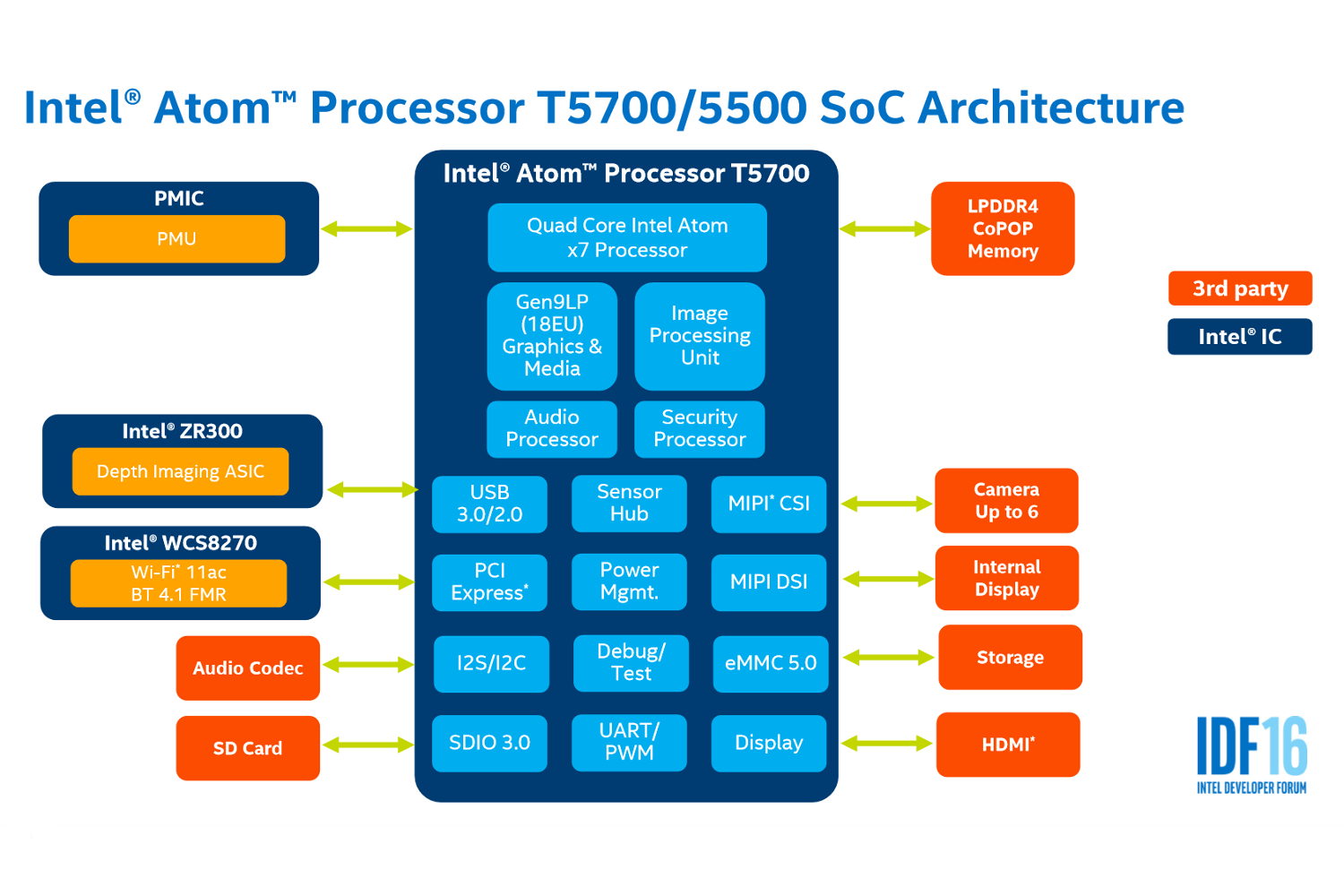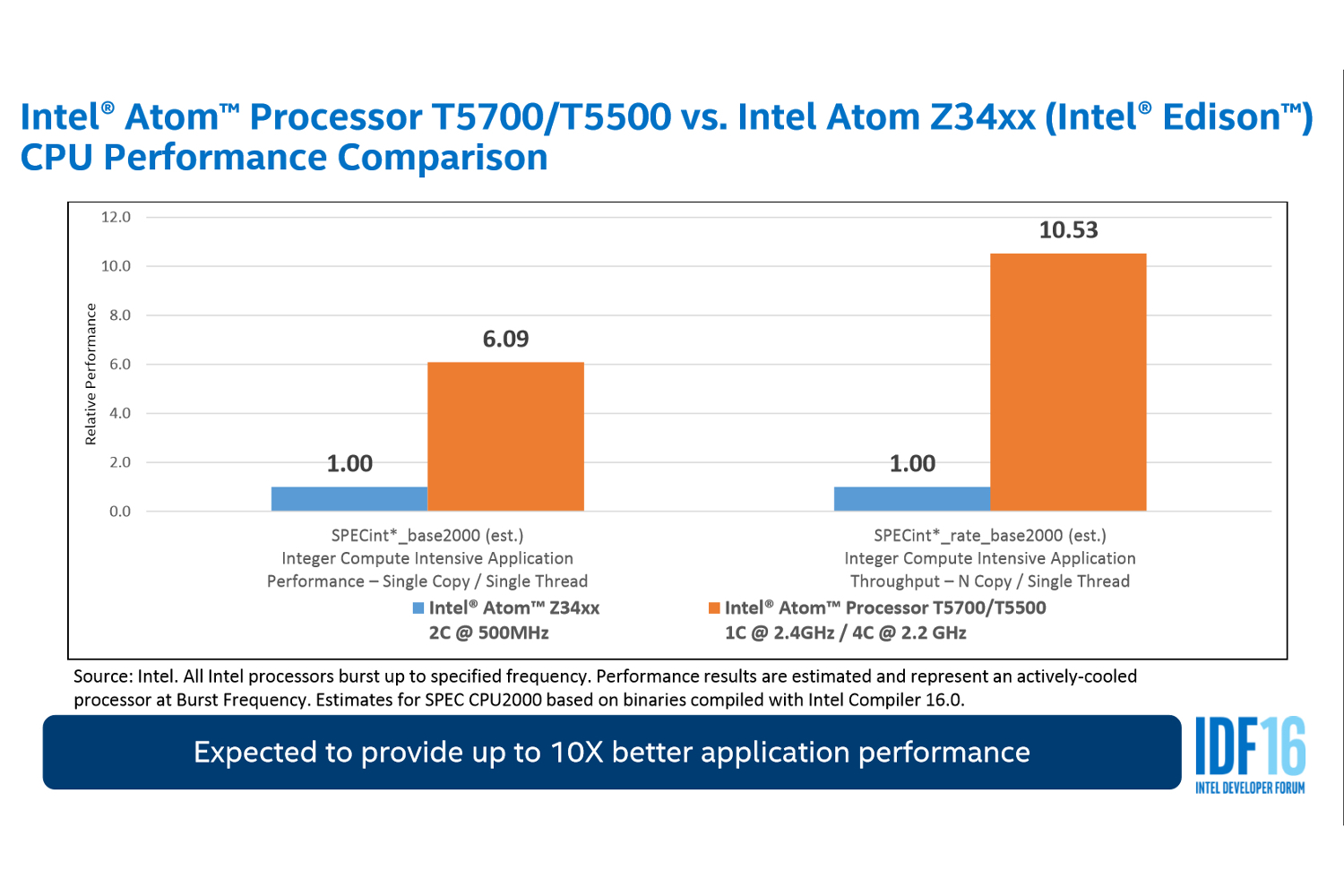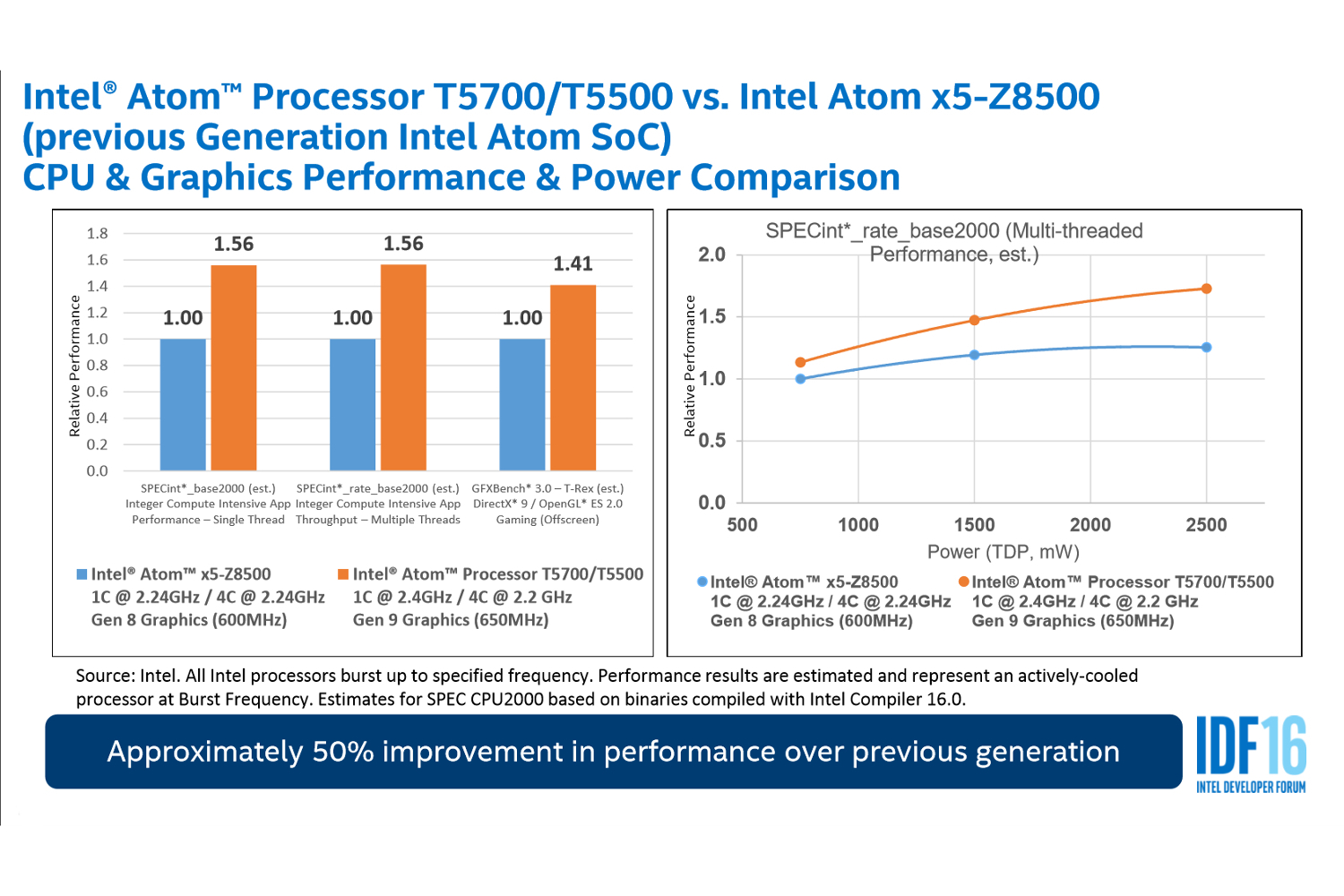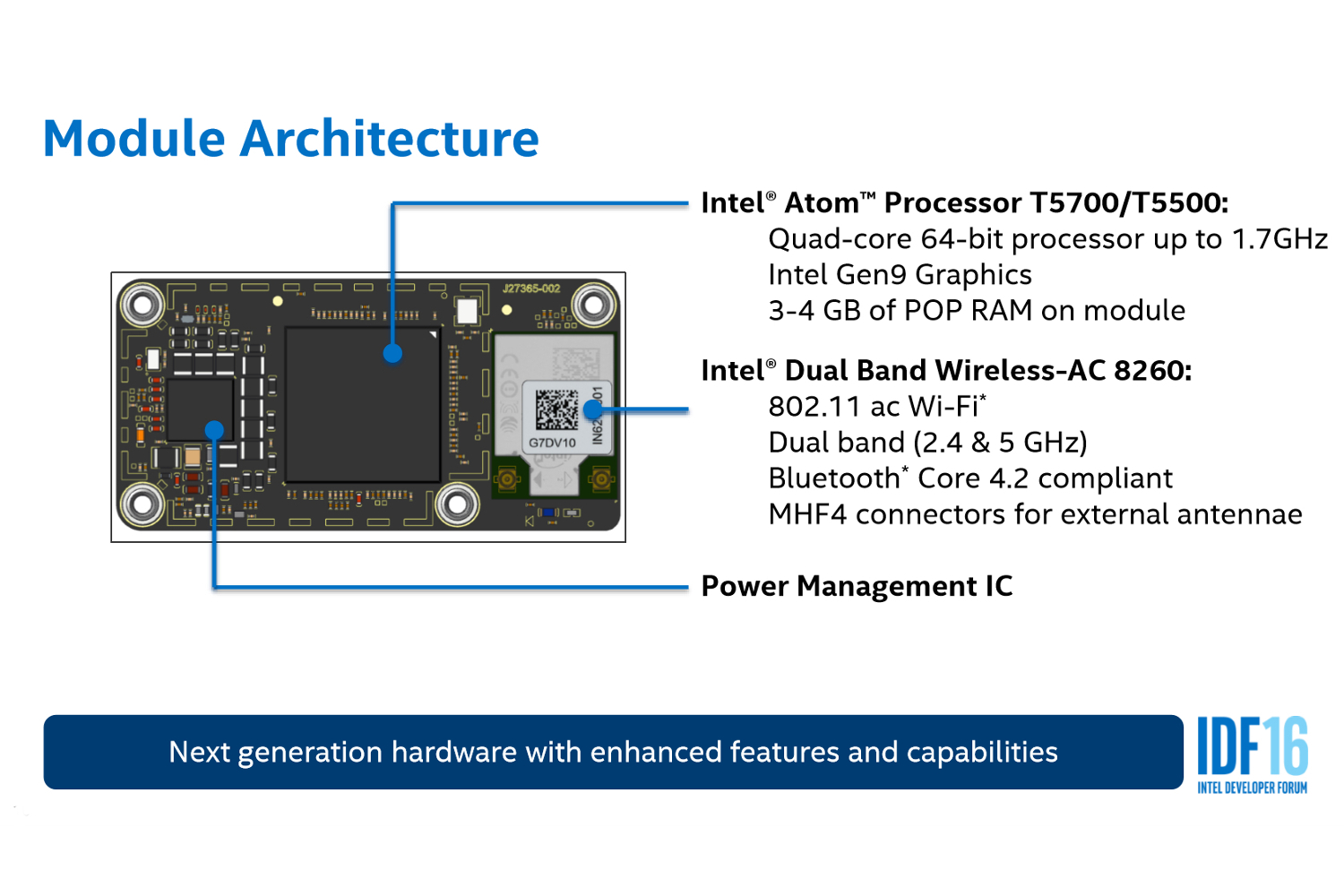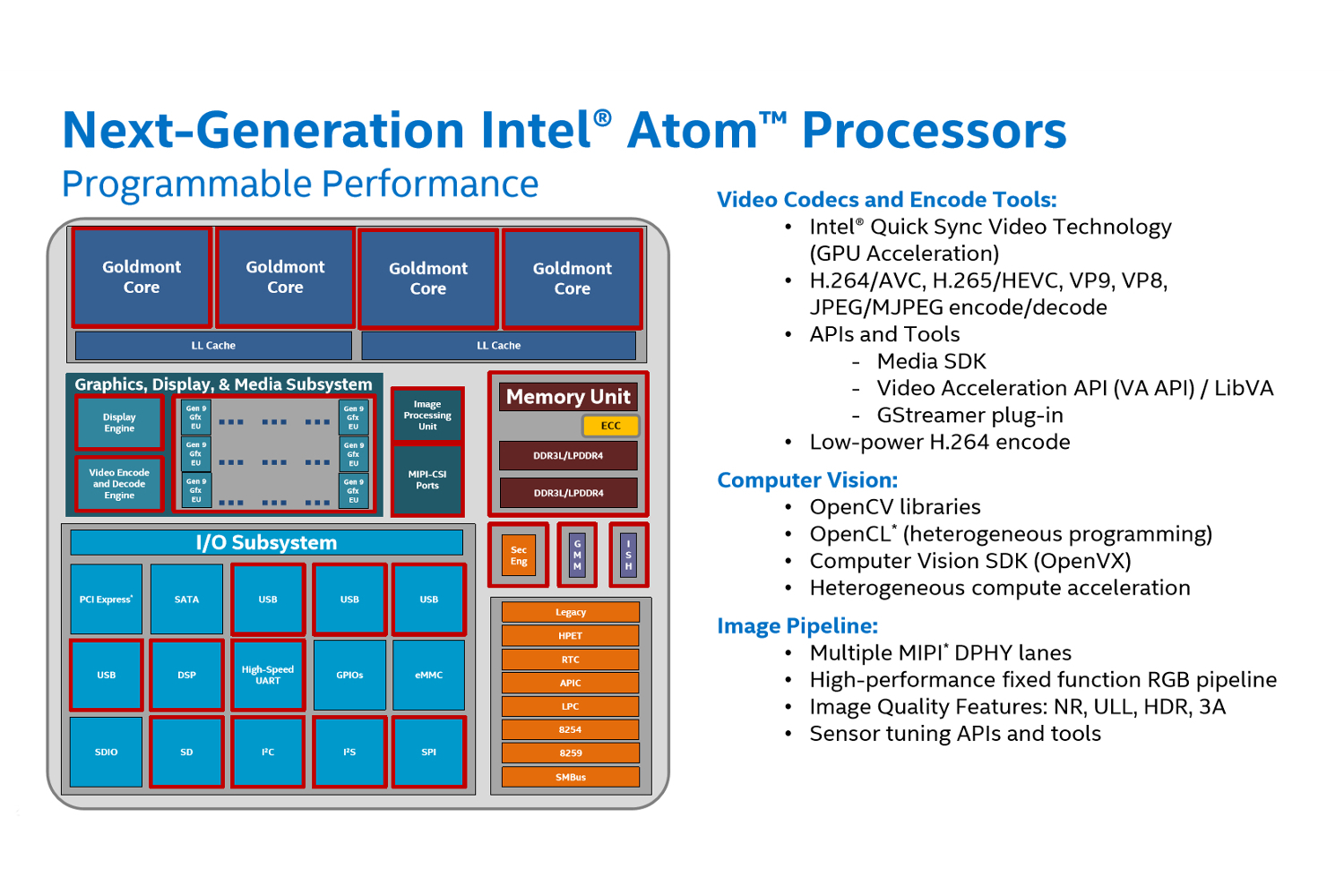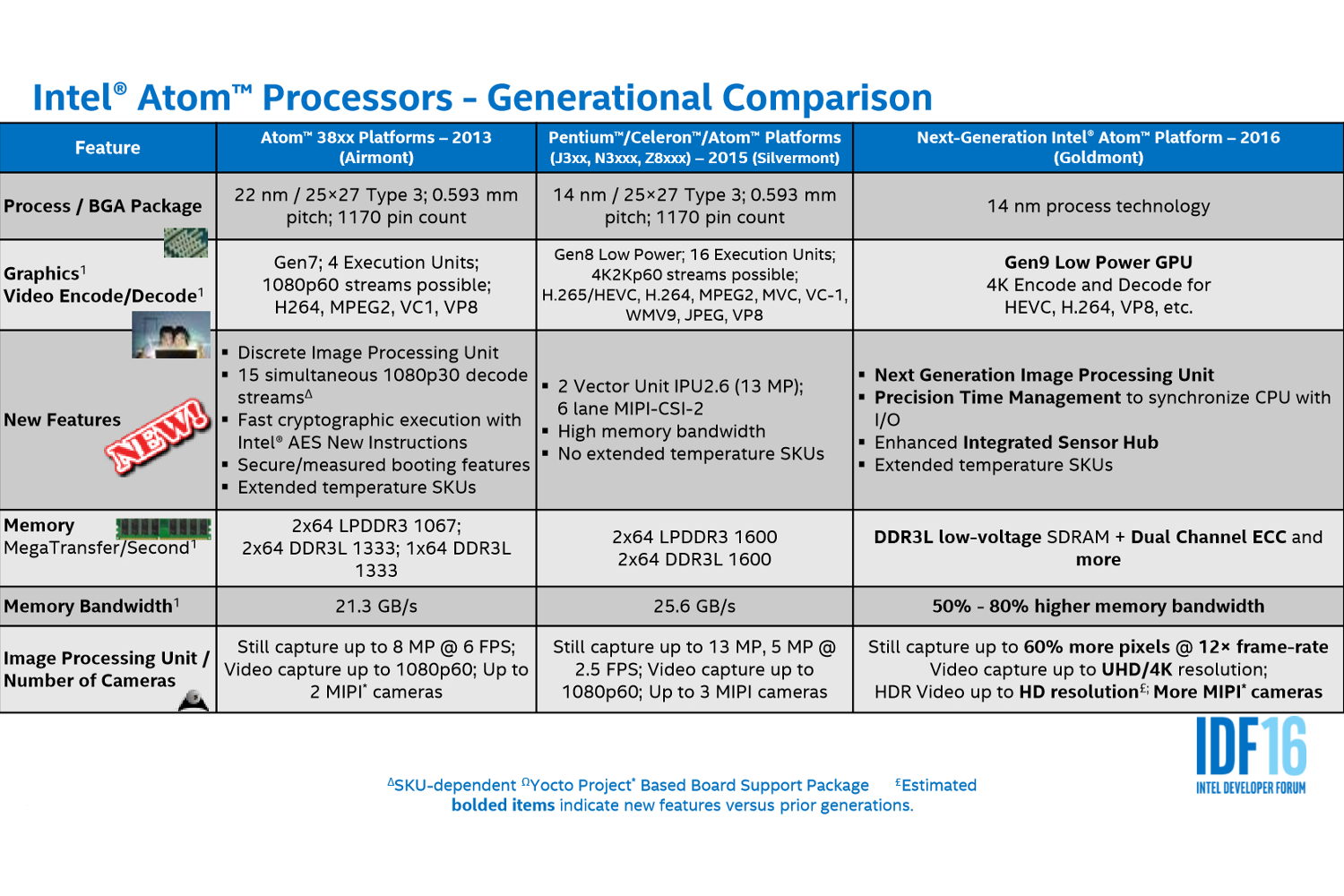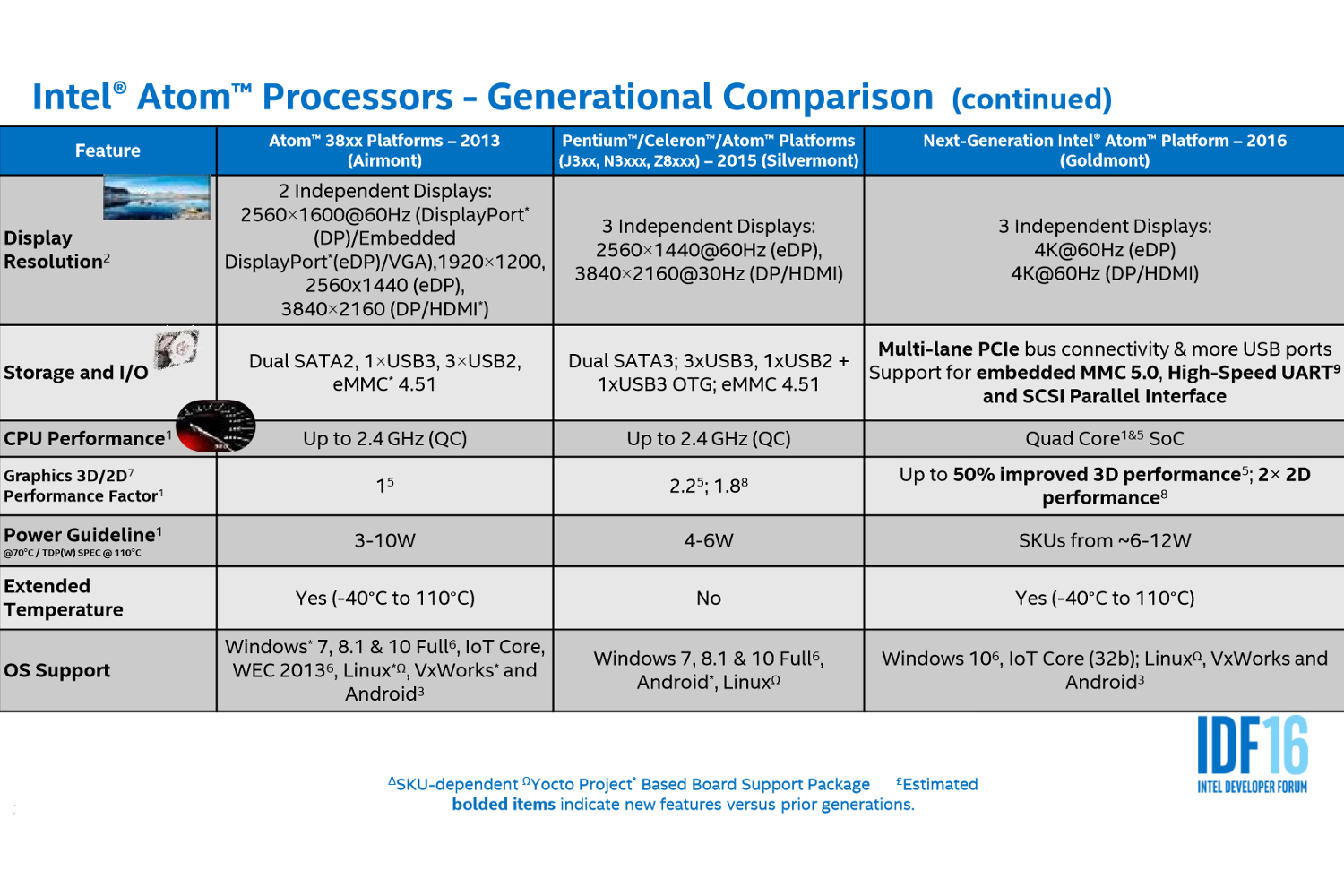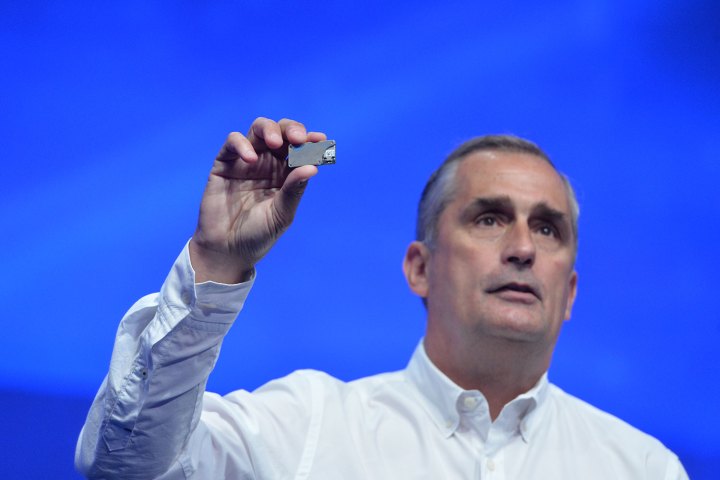
According to Intel, these two processors promise up to 50-percent better performance than the previous “Cherry Trail” generation. However, consumers likely won’t see these chips in smartphones, tablets, laptops, and other popular computing platforms given that Intel is moving to use its “Apollo Lake”-based Celeron and Pentium processors in mobile devices instead.
During one of the IDF 2016 sessions provided to developers, the company compared the T5700/T5500 chips to the Atom Z34xx, showing up to 10 times better application performance in the newer processors. The company also compared them to the Atom x5-Z8500, revealing slightly better performance in games using DirectX 9 and OpenGL ES 2.0, better single-thread performance in integer compute intensive applications, and better throughput with multiple threads in the same applications.
According to one of the slides, the Atom T5700 processor includes four “Goldmont” cores, a Gen9 Low Power graphics component, an image processing unit, an audio processor, and a security processor. The chip can support up to six cameras, Wireless AC and Bluetooth 4.1 FMR connectivity, Intel’s RealSense Camera ZR300 for developers, LPDDR4 memory, multi-lane PCI Express bus connections, eMMC 5.0 storage, and more.
In an entirely different session, the company showed that its next-generation Atom chips are based on 14nm process technology. The graphics core is capable of 4K encode and decode, and up to three independent displays: 4K at 60Hz via embedded DisplayPort, or
That all said, Intel said in its original Joule announcement that the Atom T5700 chip has a clock speed of 1.7GHz and a burst clock speed of 2.4GHz. The Atom T5500 chip is a bit slower with a base clock speed of 1.5GHz (the burst speed is unknown at the moment). Processors based on Intel’s Goldmont core architecture have thermal envelopes ranging from six to 12 watts.
Looking back on the previous Cherry Trail generation of Atom processors, the new versions are a big improvement. Based on Intel’s “Silvermont” core architecture, the older Atom chips include a Gen8 Low Power graphics component, support for LPDDR3 and DDR3L memory at 1,600MHz, display resolutions up to 3,840 by 2,160 at 30Hz through DisplayPort and HDMI, and eMMC 4.51 storage. However, the newer Atom chips demand more power, as the 2015 chips have thermal envelopes ranging between a mere four and six watts.
As previously reported, the Joule 570x will come packed with 4GB of LPDDR4 system memory, 16GB of eMMC storage, interfaces for USB 3.0, MPI CSI and MIMO, Wireless AC/Bluetooth 4.1 connectivity, and a Linux-based operating system fine-tuned for IoT and smart devices. The Joule 550x kit has 3GB of LPDDR4 system memory, 8GB of eMMC storage, and the same features (outside the Atom chip) as the other Joule kit. Both support the Intel RealSense cameras and libraries.
Finally, we’ve compiled all the Intel slides related to the two new Atom processors from IDF 2016 in a gallery embedded below.
Editors' Recommendations
- Why the most powerful laptops of 2024 might not use Intel’s latest chips
- Your next smartphone might have an Intel processor — seriously
- AMD might deal a huge blow to Intel with new 3D V-Cache CPUs
- Intel serves up new benchmarks for Arc Alchemist, but can you trust them?
- Intel claims new 12th-gen laptop chips outclass the M1 Pro
